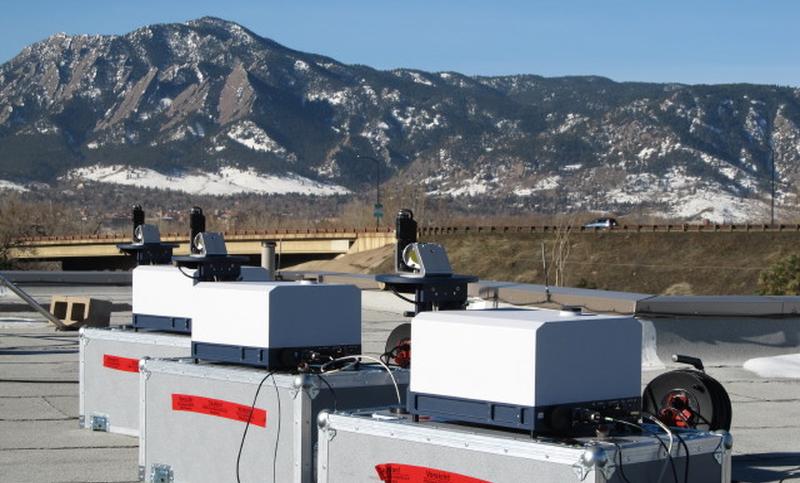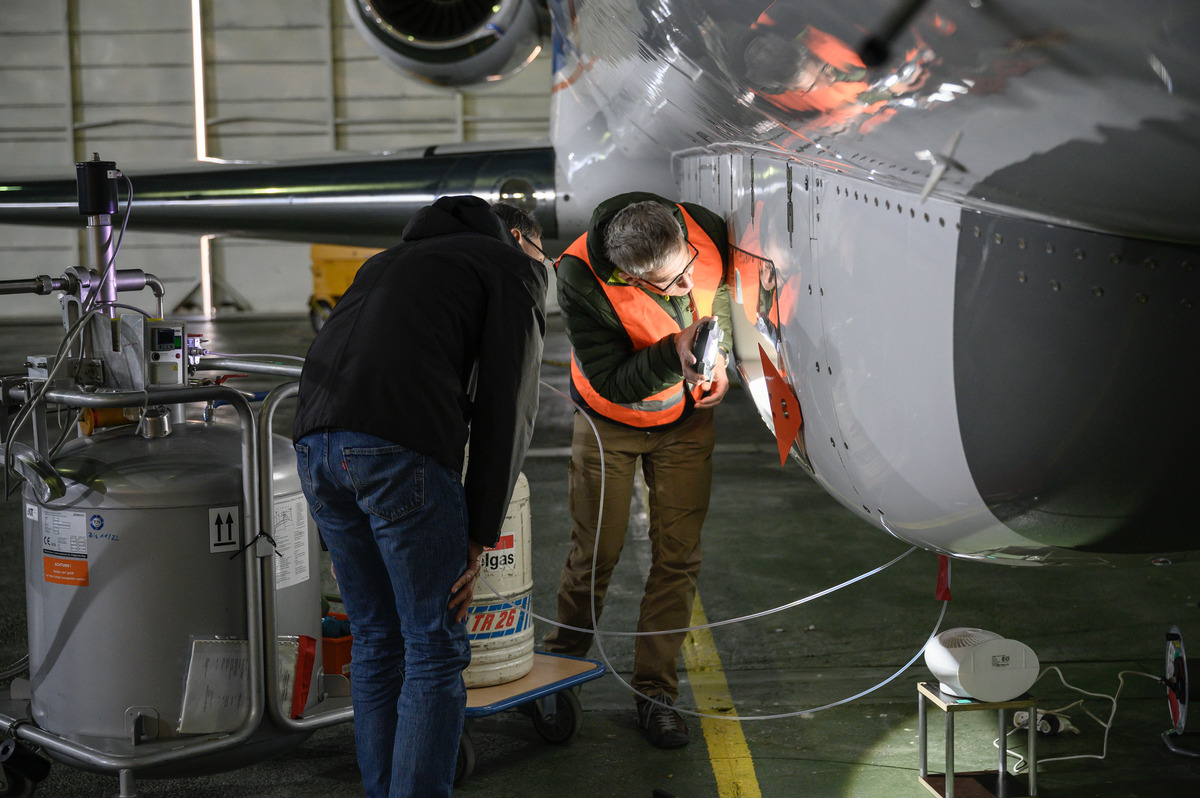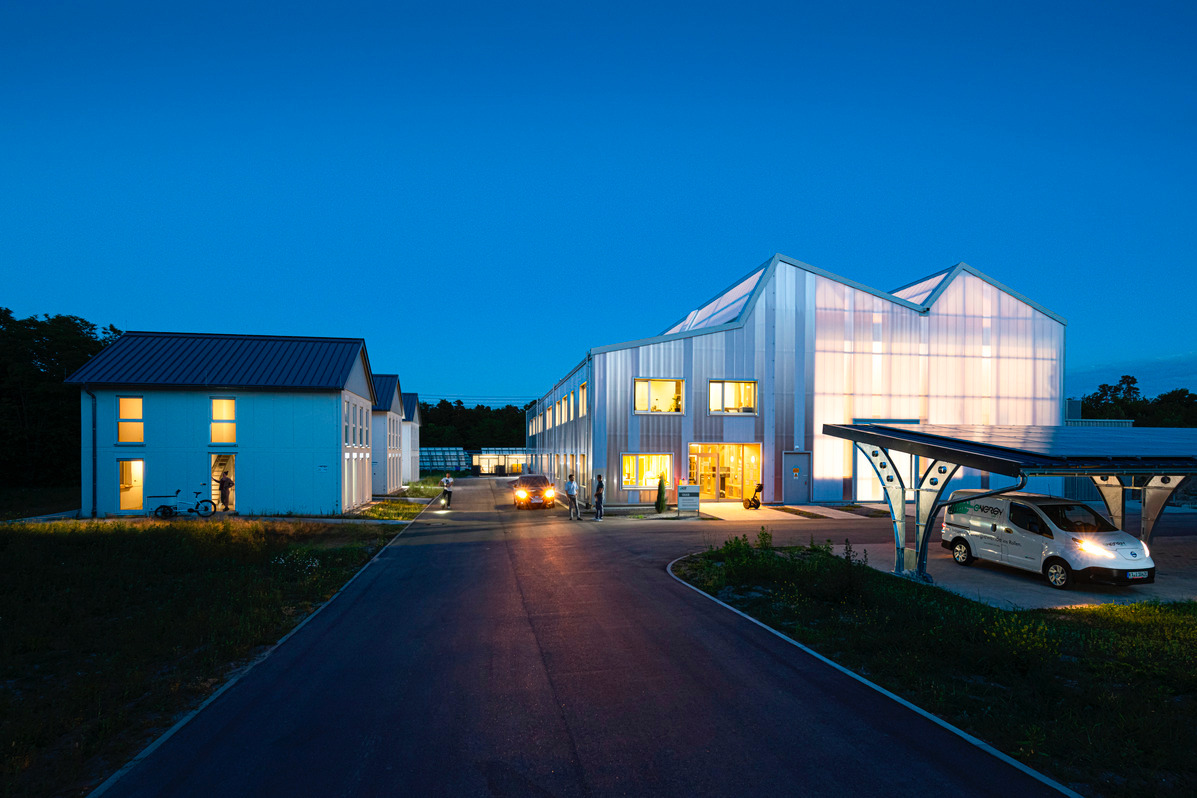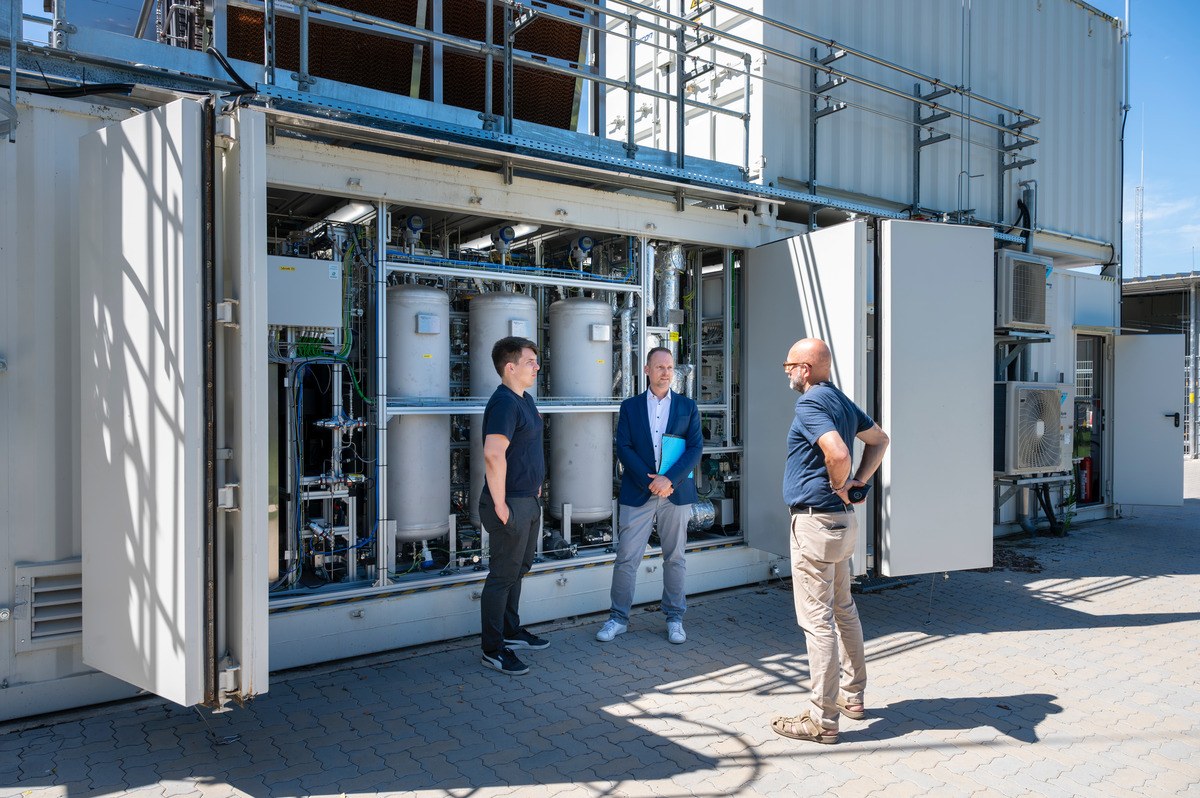AIDA
The AIDA (Aerosol Interaction and Dynamics in the Atmosphere) facility at KIT is a unique laboratory for the investigation of atmospheric processes. It comprises two simulation chambers: AIDAc, which has been in operation since 1997, and AIDAd, which went into operation in 2020. These chambers enable research into aerosol, cloud and trace gas processes under various thermodynamic conditions. AIDA plays a central role in climate research and is part of the European research infrastructure system ACTRIS, which promotes the exchange and calibration of measuring instruments.
BFO
The Black Forest Observatory (BFO) of the Karlsruhe Institute of Technology (KIT) is a high-precision geophysical measuring station in the Black Forest. Over 30 sensors, including a superconducting gravimeter and broadband seismometer, are used to record earth deformations and changes in the earth's gravitational and magnetic fields. The BFO is internationally networked and offers ideal conditions for research and testing new measuring instruments. It is available to scientific projects and the public with real-time data and also enables students and visiting scientists to carry out practical research.
Soil Mechanics Lab and Experimental Hall
The Institute of Soil Mechanics and Rock Mechanics (IBF) at the Karlsruhe Institute of Technology (KIT) offers comprehensive services in soil mechanics and foundation engineering. It carries out specialized investigations and tests on various geotechnical issues, including the analysis of soil samples, grain size distributions, water content and permeability. With state-of-the-art laboratory techniques and broad expertise in geotechnics, the IBF supports projects from science and industry and offers customized solutions for construction projects and research.
CoCCON
COCCON (COllaborative Carbon Column Observing Network) is a network of stations for the precise measurement of carbon dioxide in the atmosphere. With sophisticated measuring instruments and advanced analysis, COCCON contributes to the improvement of global CO₂ monitoring. It provides important data for climate research, emissions monitoring and the validation of satellite measurements. The network helps to better understand the sources and sinks of greenhouse gases and thus to refine climate models and forecasts.
GLORIA
GLORIA (Gimballed Limb Observer for Radiance Imaging of the Atmosphere) is an innovative instrument for remote measurement of the atmosphere that combines the advantages of imaging and spectral analysis. Developed by KIT and Forschungszentrum Jülich, GLORIA enables high-resolution measurements in the infrared range to precisely monitor atmospheric processes. The instrument can be deployed in both limb and nadir positions and is used on research platforms such as airplanes and stratospheric balloons. It improves spatial resolution by a factor of ten compared to conventional instruments.
KLOCX
The KLOCX (Karlsruhe Low-Cloud Exploratory Platform) project of the IMK-ASF at KIT investigates the formation and dissolution of low clouds and fog. It uses a mobile platform with in-situ and remote sensing instruments to precisely record atmospheric processes. KLOCX serves as a flexible ground-based system for researching cloud and fog processes and provides valuable data for improving weather models and climate forecasts.
LLEC (Energy Lab)
The RPE-LLEC (Living Lab Energy Campus) at the Karlsruhe Institute of Technology (KIT) is a research platform that enables realistic tests of heating systems with grid-friendly control. Innovative concepts for increasing energy efficiency and grid stability are developed using various heating technologies in experimental buildings. The aim is to optimize systems that both save energy and help stabilize the power grid.
SEnSSiCC (Energy Lab)
The Smart Energy System Simulation and Control Center (SEnSSiCC) at the Karlsruhe Institute of Technology (KIT) is a central research center for the development of innovative energy systems. It links various research facilities and technologies, including photovoltaics, battery storage and security solutions, in order to test and optimize sustainable energy concepts. SEnSSiCC processes both physical and virtual data and provides a platform for analyzing and further developing energy systems in the context of the energy transition.
Road construction lab
The road construction laboratory of the Institute of Road and Railway Engineering (ISE) at the Karlsruhe Institute of Technology (KIT) is a recognized testing laboratory according to RAP Stra and a leading research and training center in the field of asphalt technology. It offers specialized laboratories, including the mineral, bitumen, asphalt and performance laboratory. Extensive tests are carried out here, supported by state-of-the-art equipment. The laboratory also serves as a training center for building material testers. Further information on the services, laboratory areas and testing equipment is available on the website.
Theodor-Rehbock-Flussbaulaboratorium
We want to know exactly: flow processes in nature are highly complex and in the field of water-solid interaction (e.g. water-air, water-sediments or water-macroplastics) we use experimental methods to understand and quantitatively describe processes.
With our scaled-down models, we support planning processes for complex hydraulic engineering issues and contribute to improving planning reliability both in the area of technical infrastructure and in the area of ecological upgrading of watercourses.
Cloud radar
KIT's MIRA-S cloud radar is a mobile, highly sensitive dual-polarization Doppler radar specially developed for measuring clouds and atmospheric processes. With a range of up to 15 km and a resolution of 30 m, it enables the precise detection of echo signals. The radar is mounted on a vehicle trailer and can be used flexibly to collect data in real time. It provides valuable information for the investigation of cloud structures and their dynamics.







_700Px.jpg)
